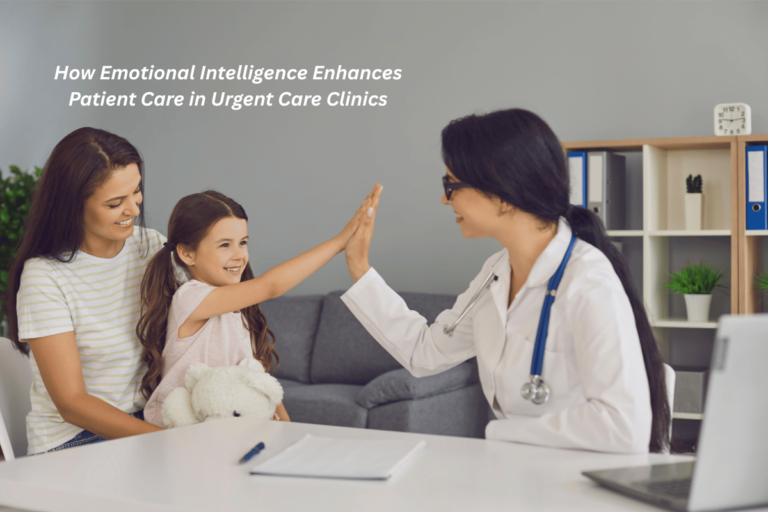Incorporating Patient Feedback to Drive Healthcare Improvement
As the healthcare landscape continues to evolve, the integration of patient feedback has emerged as a pivotal driver of improvement within the industry. The insights and perspectives shared by patients hold immense value in shaping the quality of care and services provided.
However, the process of effectively incorporating patient feedback into healthcare improvement initiatives is a multifaceted endeavor that requires careful consideration and strategic implementation. From understanding patient perspectives to implementing changes based on feedback, the journey of leveraging patient feedback to drive healthcare improvement is a compelling narrative that unveils the transformative power of collaborative patient-provider partnerships.
Key Takeaways
- Patient engagement is crucial for improving the quality of care and patient satisfaction.
- Digital feedback platforms and data analytics tools enable efficient collection and analysis of patient feedback data.
- Collaborative efforts in analyzing patient feedback data lead to innovative solutions for healthcare system enhancement.
- Extracting actionable insights from patient feedback data drives meaningful change in healthcare delivery and fosters patient-centered care.
Understanding Patient Perspectives
Understanding patient perspectives is crucial for healthcare providers to improve the quality of care and patient satisfaction. Patient engagement plays a pivotal role in obtaining valuable insights into their experiences within the healthcare system. By actively involving patients in decision-making processes, providers can gain a deeper understanding of their needs, preferences, and concerns. This data-driven approach allows healthcare organizations to tailor their services to better meet patient expectations and enhance overall satisfaction.
Empathy training for healthcare professionals is an innovative strategy that can significantly impact patient perspectives. By developing a deeper sense of empathy, providers can better connect with their patients, understand their emotions, and communicate more effectively. This collaborative approach fosters a more patient-centered care environment, ultimately improving patient experiences and outcomes.
Incorporating patient feedback and perspectives into the design and delivery of healthcare services is essential for driving continuous improvement. It empowers patients, enhances their sense of control over their healthcare journey, and ultimately leads to more positive outcomes. By prioritizing patient engagement and empathy training, healthcare providers can create a more responsive and patient-centric care ecosystem.
Implementing Feedback Collection Methods
To enhance the collection of feedback from patients, healthcare providers are increasingly leveraging innovative data-driven methods and collaborative approaches to gain valuable insights and drive continuous improvement in the delivery of healthcare services.
Implementing Feedback Collection Methods involves the following strategies:
- Digital Feedback Platforms: Healthcare providers are utilizing digital platforms to capture real-time feedback from patients. These platforms enable patients to provide their input conveniently through online surveys, mobile applications, or interactive voice response systems. This approach not only streamlines the feedback collection process but also enhances patient engagement by offering them a convenient and accessible channel to express their opinions.
- Data Analytics Tools: Leveraging advanced analytics tools allows healthcare organizations to analyze large volumes of feedback data efficiently. By employing sentiment analysis, natural language processing, and other data mining techniques, providers can derive meaningful insights from patient feedback, identify trends, and prioritize areas for improvement.
- Collaborative Improvement Workshops: Some healthcare institutions are organizing collaborative workshops involving patients, caregivers, and healthcare professionals to discuss feedback and co-create solutions. These workshops foster a sense of partnership, encourage open communication, and enable stakeholders to collectively develop strategies for enhancing the patient experience and overall healthcare delivery.
Analyzing Patient Feedback Data
As we look into the process of analyzing patient feedback data, it is essential to explore various data analysis techniques that can provide valuable insights.
By focusing on actionable insights derived from patient feedback, healthcare organizations can drive improvements in service delivery, patient satisfaction, and overall healthcare outcomes.
Collaborative efforts in analyzing patient feedback data can lead to innovative solutions that address specific areas for enhancement within the healthcare system.
Data Analysis Techniques
Utilizing advanced data analysis techniques is crucial for extracting valuable insights from patient feedback data, facilitating informed decision-making and continuous healthcare improvement. To effectively analyze patient feedback, the following approaches are essential:
- Data Visualization Techniques: Implementing visual tools such as graphs, heat maps, and dashboards to represent patient feedback trends and patterns, aiding in the identification of areas for improvement.
- Statistical Analysis: Applying statistical methods to quantify and interpret patient feedback data, enabling healthcare providers to make evidence-based decisions and assess the impact of interventions.
- Sentiment Analysis: Leveraging natural language processing and machine learning algorithms to understand the emotions and opinions expressed in patient feedback, providing deeper insights into patient experiences and satisfaction levels.
Actionable Insights From Feedback
In the quest for healthcare improvement, extracting actionable insights from patient feedback data is a pivotal endeavor that demands a data-driven, innovative, and collaborative approach. Leveraging technology to analyze patient feedback data can provide valuable insights that drive meaningful change in healthcare delivery. Feedback action plans can be developed to address recurring issues and enhance patient experience. Below is a table that illustrates the process of extracting actionable insights from patient feedback data:
| Step | Description |
|---|---|
| Data Collection | Gather feedback through surveys, online platforms, and in-person interactions |
| Data Analysis | Utilize data analytics tools to identify trends and patterns in the feedback |
| Identifying Improvement Areas | Pinpoint specific areas for improvement, such as wait times or communication |
| Developing Action Plans | Create strategies to address the identified improvement areas |
| Monitoring and Evaluation | Track the effectiveness of the action plans and make adjustments as necessary |
Driving Healthcare Improvements
Leveraging patient feedback data to drive healthcare improvements demands a data-driven, innovative, and collaborative approach that extracts actionable insights to effect meaningful change in healthcare delivery. Analyzing patient feedback data is key to driving healthcare improvements and fostering patient-centered care. Here's how:
- Data Analytics: Utilize advanced analytics tools to dissect patient feedback data, uncover trends, and identify areas for improvement. By employing predictive modeling and sentiment analysis, healthcare providers can gain valuable insights into patient experiences and preferences.
- Continuous Improvement: Implement a culture of continuous improvement based on patient feedback data. Encourage healthcare staff to proactively engage with patient feedback, identify improvement opportunities, and drive innovative solutions to enhance patient care.
- Collaborative Decision-Making: Foster collaboration between healthcare professionals, administrators, and patients to co-create innovative strategies for improving healthcare delivery. By involving all stakeholders, healthcare innovation can be tailored to meet the diverse needs of patients, resulting in more patient-centered care.
Identifying Improvement Opportunities
As we examine the points of patient input analysis and quality improvement initiatives, it becomes evident that identifying improvement opportunities is crucial for advancing healthcare services.
By leveraging patient feedback data, healthcare organizations can uncover areas for enhancement and innovation.
This collaborative approach allows for data-driven decision-making, leading to tangible and sustainable improvements in patient care.
Patient Input Analysis
Through careful analysis of patient input, healthcare providers can pinpoint specific areas for improvement, fostering a data-driven approach to innovation and collaboration.
Patient engagement and feedback analysis are essential components in this process. When analyzing patient input, healthcare providers should consider the following:
- Trends and Patterns: Identifying recurring themes in patient feedback can reveal common issues or areas for improvement within healthcare services.
- Quantitative Metrics: Utilizing quantitative data, such as satisfaction scores or wait times, can provide concrete evidence of areas needing improvement.
- Qualitative Insights: Delving into the qualitative aspects of patient feedback, including individual experiences and suggestions, can offer nuanced insights into potential improvement opportunities.
Quality Improvement Initiatives
By analyzing patient input and identifying recurring themes and quantitative metrics, healthcare providers can effectively pinpoint improvement opportunities within their quality improvement initiatives.
Patient satisfaction surveys, complaints, and suggestions provide valuable insights into areas that require attention.
Additionally, process improvement methodologies like Lean, Six Sigma, and Kaizen can be utilized to streamline workflows, reduce errors, and enhance overall patient experience.
Collaborative efforts involving multidisciplinary teams can help in implementing evidence-based practices and standardized protocols to address identified improvement areas.
Furthermore, leveraging technology solutions such as data analytics and predictive modeling can aid in forecasting potential issues and proactively mitigating them.
Continuous monitoring and feedback loops are essential for evaluating the impact of implemented changes and fostering a culture of ongoing improvement within healthcare organizations.
Implementing Changes Based on Feedback
Healthcare providers can effectively implement changes based on patient feedback by leveraging data-driven insights and fostering a culture of innovation and collaboration within their organizations. This can be achieved through:
- Data Analytics: Utilizing advanced analytics to identify patterns and trends in patient feedback can provide valuable insights into areas needing improvement. By analyzing data on patient experiences, healthcare providers can pinpoint specific areas for enhancement, such as communication, wait times, or the overall care environment. This data-driven approach allows for targeted and impactful changes to be made, leading to a more patient-centered care delivery.
- Patient-Centric Design Thinking: Applying design thinking methodologies that center on patient needs and experiences can drive innovation in healthcare. By involving patients in the co-creation of solutions, healthcare organizations can ensure that the implemented changes directly address the concerns and preferences expressed in patient feedback. This collaborative approach fosters a patient-centric culture and promotes the development of tailored solutions to enhance the overall care experience.
- Continuous Feedback Loops: Establishing mechanisms for ongoing patient feedback and engagement enables healthcare providers to continually adapt and improve their services. By creating feedback loops that allow for real-time input from patients, organizations can swiftly implement changes based on the most current insights, ensuring a responsive and patient-focused approach to care delivery.
Monitoring Impact on Patient Experience
Monitoring the impact of implemented changes on patient experience is crucial for healthcare providers to ensure that their efforts are driving tangible improvements and addressing the specific concerns identified through patient feedback. Patient satisfaction is a central focus, and impact analysis is essential to gauge the effectiveness of implemented improvement strategies.
By utilizing patient feedback, healthcare providers can identify key areas for enhancement and tailor their improvement strategies to directly target the issues that matter most to patients. This data-driven approach allows for the measurement of changes in patient experience, enabling healthcare organizations to make informed decisions and continuously refine their practices.
Innovative methods, such as real-time feedback collection and analysis, are becoming increasingly prevalent in healthcare settings. These advancements enable healthcare providers to promptly identify areas for improvement and make real-time adjustments, ultimately leading to enhanced patient satisfaction.
Collaboration between healthcare staff, administrators, and patients is also pivotal in monitoring the impact on patient experience. By involving all stakeholders, healthcare providers can gain comprehensive insights and ensure that the implemented changes align with patient needs and expectations.
Through this collaborative approach and data-driven monitoring, healthcare organizations can drive continuous improvement and deliver care that truly meets the needs of their patients.
Sustaining a Culture of Continuous Improvement
To foster a culture of continuous improvement in healthcare, it is essential to integrate data-driven insights, innovative strategies, and collaborative efforts among all stakeholders. Sustaining this culture requires a concerted effort and a commitment to ongoing development.
Here are three key aspects to consider:
- Employee Engagement: Actively involving healthcare staff in the improvement process is crucial. By empowering employees to contribute their ideas and insights, healthcare organizations can tap into a wealth of frontline knowledge. This can lead to innovative solutions and a sense of ownership, ultimately driving sustained improvement efforts.
- Process Optimization: Implementing efficient and effective processes is fundamental to sustaining continuous improvement. By analyzing workflows and identifying bottlenecks, healthcare providers can streamline operations, reduce waste, and enhance the overall quality of care. Continuous monitoring and adjustment of processes based on data-driven insights are essential for ongoing optimization.
- Leadership Commitment: Leadership plays a pivotal role in fostering a culture of continuous improvement. It is vital for leaders to champion the cause, provide necessary resources, and encourage a mindset of innovation and adaptability. Their unwavering commitment sets the tone for the entire organization, influencing employee engagement and driving sustained improvement efforts.
Conclusion
Incorporating patient feedback is essential for driving healthcare improvement.
By collecting and analyzing patient perspectives, identifying improvement opportunities, and implementing changes based on feedback, healthcare organizations can continuously improve the patient experience.
While some may argue that patient feedback is subjective, the data-driven approach shows the tangible impact of these efforts on patient satisfaction and outcomes.
It is through this collaborative and innovative approach that healthcare can truly prioritize patient-centered care.







